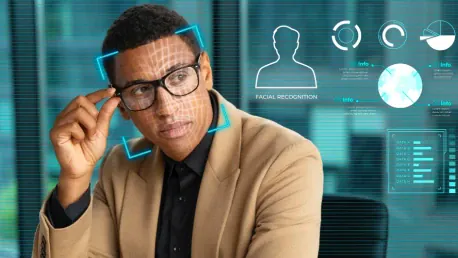Artificial intelligence (AI) is making significant strides in various industries, and recruitment is no exception. The promise of AI in streamlining and enhancing recruitment processes is enticing, but it comes with its own set of challenges. This article delves into the potential of AI to revolutionize recruitment while addressing the legal and ethical concerns that accompany its integration. The primary focus is to explore how AI can be effectively utilized within global recruitment and human resource (HR) processes, juxtaposed with the legal and ethical considerations that arise from such integration.
AI’s Potential in Recruitment
AI has the capability to transform recruitment by automating repetitive tasks, analyzing large volumes of data, and providing insights that can lead to better hiring decisions. For roles with standardized job descriptions, such as assembly line workers and delivery drivers, AI can efficiently process high volumes of applications, reducing the burden on human HR employees. This not only speeds up the recruitment process but also allows HR professionals to focus on more strategic tasks. The automation of these tasks can significantly enhance overall HR efficiency, freeing up valuable time for more complex and value-added activities.
However, the effectiveness of AI in recruitment is not uniform across all job types. For senior or highly skilled roles, current AI technology is less effective, and human intervention remains predominant. Companies are exploring AI applications for these roles, but progress is still limited. The challenge lies in developing AI systems that can accurately assess the nuanced skills and experiences required for these positions. As a result, while AI can handle the initial phases of recruitment very effectively, the final decisions for high-level roles often require the insight and intuition that only human recruiters possess.
Legal and Regulatory Landscape
The governance of AI in recruitment varies significantly by region, adding complexity to its implementation. In the European Union (EU), the EU AI Act categorizes recruitment systems as “high-risk” and imposes stringent standards for transparency, monitoring, and notification requirements. This means that companies using AI for recruitment in the EU must adhere to rigorous requirements to ensure compliance. These stringent standards are designed to safeguard applicants and ensure that AI systems do not perpetuate discrimination or bias in hiring practices.
In contrast, the United Kingdom adopts a more flexible, principles-based approach. Existing legal frameworks like the Equality Act and GDPR are leveraged to address AI-related issues. This approach allows for more adaptability but also requires companies to be diligent in ensuring their AI systems do not violate these principles. The UK’s principles-based approach is designed to provide companies with the flexibility to use AI in innovative ways while still adhering to core ethical standards.
For companies operating across multiple regions, compliance becomes even more challenging. They must navigate varying regulations to avoid legal repercussions, which can be a daunting task. Ensuring that AI systems meet the highest standards of compliance across all regions is crucial to avoid potential legal pitfalls. This requires a deep understanding of the regulatory landscape in each region and a commitment to ensuring that AI tools are designed and applied in ways that are both legally compliant and ethically sound.
Addressing Bias and Discrimination
One of the most significant concerns with AI in recruitment is the potential for bias and discrimination. AI systems can inadvertently perpetuate biases present in their training data, leading to discriminatory outcomes. Notable cases of bias include the deselection of women and certain ethnic groups due to historically biased data. This issue underscores the critical need for thorough and ongoing analysis of AI systems to identify and mitigate potential biases in hiring practices.
To address AI bias, organizations must implement robust measures to identify and rectify biases within their systems. This requires a nuanced understanding of existing legal frameworks to mitigate the risk of discrimination. Given the uncapped damages in discrimination cases, the stakes are high for companies to ensure their AI systems are fair and equitable. This necessity has led to the development of sophisticated tools for bias detection and correction, designed to ensure that AI applications promote diversity and inclusivity rather than hinder it.
The ambiguity surrounding bias mitigation in AI presents significant legal challenges. Organizations often struggle to align AI usage with non-discriminatory principles, leading to potential legal liabilities. Ensuring that AI tools are rigorously tested and reviewed for biases before deployment is essential to avoid reinforcing existing hiring biases. Regular audits and checks by human HR personnel are crucial to verify AI decisions and maintain accuracy. Proactively addressing these issues requires a blend of technological innovation and legal expertise to navigate the complex landscape of AI-driven recruitment.
Legal Implications and Accountability
Regular audits and checks by human HR personnel verify AI decisions and maintain accuracy. Transparency in AI processes and decisions is also vital to maintain trust and compliance. Companies must communicate clearly with regulators, employees, and applicants about their AI usage and decision-making processes. This transparency helps build trust with applicants and ensures compliance with regulatory requirements, creating an environment of accountability and ethical responsibility within the organization.
One key aspect of maintaining transparency is documenting how AI decisions are made and ensuring that these processes are understandable and accessible to all stakeholders. Tools involving AI emotional recognition or video interviews must be approached with caution. These tools have the potential to introduce unintended biases based on irrelevant factors, making human oversight even more critical. Effective communication about how these systems are used and the safeguards in place to prevent bias is essential in maintaining trust and demonstrating a commitment to fair recruitment practices.
Human oversight is essential in the integration of AI in recruitment. AI systems must undergo regular audits and checks by human HR personnel to ensure accuracy and mitigate potential biases. This oversight helps maintain trust and accountability in AI-driven HR processes. Furthermore, ensuring that AI tools are subject to regular review and updating is essential in keeping them aligned with evolving legal standards and employment practices, ensuring that they continue to operate in an ethical and compliant manner.
Human Oversight and Transparency
Transparency in AI processes and decisions is crucial. Companies must be clear about how AI is used in recruitment and the factors considered in decision-making. This transparency helps build trust with applicants and ensures compliance with regulatory requirements. By openly sharing information about how AI is employed and the specific criteria it uses in evaluating candidates, companies can demystify the AI process and alleviate concerns about its fairness and accuracy.
Tools involving AI emotional recognition or video interviews must be approached with caution. These tools have the potential to introduce unintended biases based on irrelevant factors, making human oversight even more critical. The role of human HR professionals is to step in and provide context and judgment where AI may fall short, ensuring that all candidates are assessed fairly and accurately. Providing applicants with clear explanations of how AI tools contribute to hiring decisions can foster a sense of transparency and fairness.
Ensuring effective human oversight involves integrating human checks and balances at critical points in the AI-driven recruitment process. This dual approach combines the efficiency and scalability of AI with the nuanced understanding and judgment of human recruiters, enhancing the overall quality and fairness of hiring decisions. Regular training for HR personnel on the ethical use and limitations of AI tools can further support this balanced approach, ensuring that human oversight remains robust and effective.
Ethical and Legal Challenges
Artificial intelligence (AI) is making significant advancements across diverse sectors, and recruitment is no exception. The allure of AI lies in its potential to streamline and enhance recruitment processes, making them more efficient and effective. Through AI, tasks such as resume screening, initial candidate interactions, and even preliminary interviews can be automated, saving HR departments valuable time and resources. But alongside these benefits come notable challenges that need to be examined.
This discussion will delve into how AI is poised to revolutionize recruitment, focusing on its applications in HR processes internationally. It will also address the accompanying legal and ethical considerations, such as ensuring unbiased algorithms, maintaining candidate privacy, and adhering to employment laws. While AI promises to make global recruitment more efficient by quickly filtering candidates and matching them to appropriate roles, it’s crucial to manage the ethical implications responsibly.
By integrating AI, companies can potentially eliminate human biases in the hiring process, leading to more diverse and inclusive workforces. Nevertheless, there’s a need for rigorous oversight to ensure AI systems are transparent and fair. This exploration aims to provide a comprehensive understanding of how AI can be effectively integrated into recruitment while navigating the legal and ethical landscapes that come with it.









